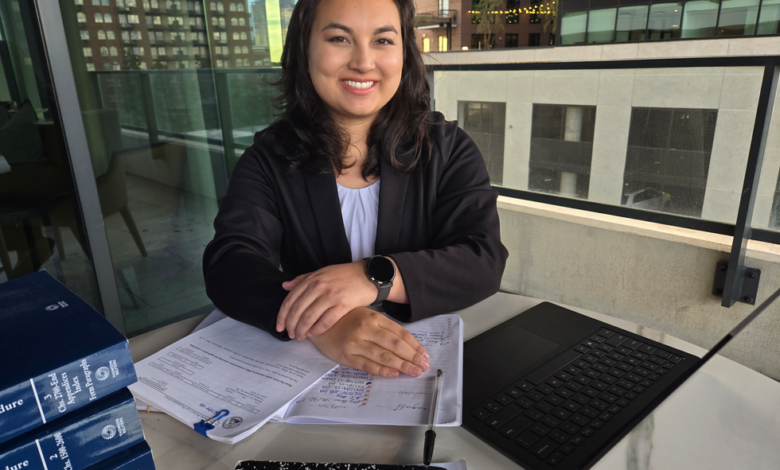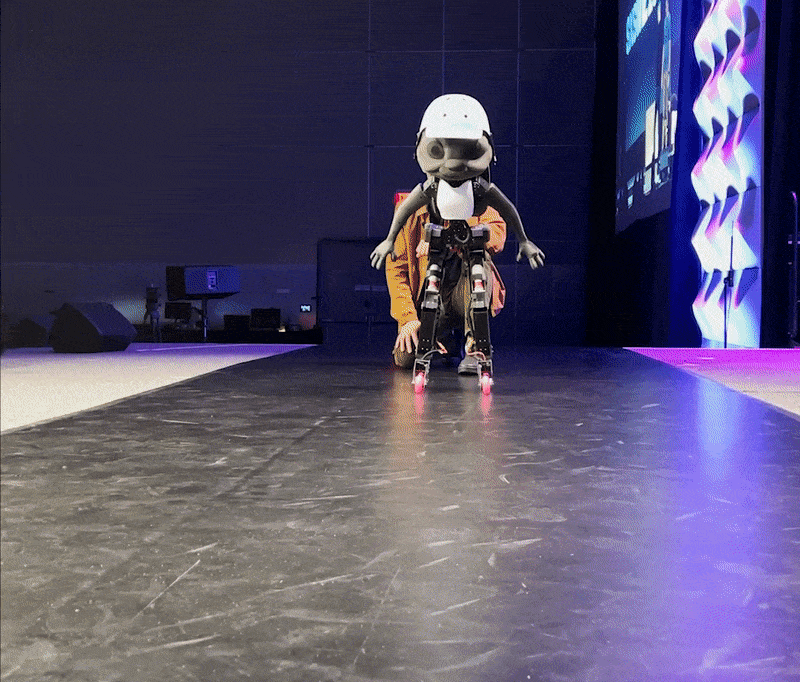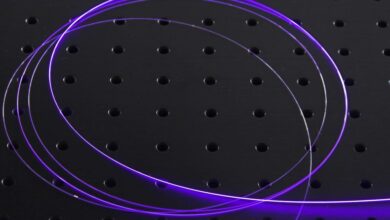A Patent Engineer’s Advice For First-time Inventors

Lesley-Ann Knee credits her father for introducing her to the world of patents. He’s an engineer who specializes in application-specific integrated circuits (ASICs) and holds several patents on technologies he developed while working for Hewlett-Packard and Microsoft.
“I would hear stories of his experiences through the patent prosecution processes,” Knee says, which taught her about different kinds of patents, the importance of documentation, and using detailed language. She remembers one litigation battle over a patent that went on for years, which her father’s company lost because someone forgot to delete information in a patent claim.
Lesley-Ann Knee
Employer:
Husch Blackwell
Occupation:
Patent Engineer
Education:
Bachelor’s degree in electrical engineering, Colorado State University, in Fort Collins
Knee, an electrical engineer, now works as a patent engineer in the patent prosecution department at the law office of
Husch Blackwell, headquartered in Chicago. Under the supervision of patent attorneys, Knee helps with writing, filing, and managing patent applications with the U.S. Patent and Trademark Office (USPTO).
She is currently studying for the patent bar exam, which would qualify her to be a licensed patent agent, registered with the USPTO to help prepare and prosecute patent applications. Assuming she passes, she then intends to go to law school to become a patent attorney.
How to Become a Patent Engineer
Knee initially didn’t know what she wanted to study in college. Eventually she decided that an engineering degree offered diverse career opportunities, so she enrolled at
Colorado State University, in her hometown of Fort Collins. She followed in her father’s footsteps, specializing in ASIC design, but also studied power systems and semiconductor physics and minored in mathematics. In 2022 she worked as an intern in the engine research division of Honda Research and Development, in Raymond, Ohio, where she developed a data analysis tool to help with testing heat distribution in vehicles.
After graduating from Colorado State in 2022, she decided to get a job related to patents. From January to May, she worked part-time as a patent technical intern at the law firm of
Dorsey & Whitney, in Denver. “After learning about patents from the other side, I fell in love with the industry,” she says. Knee joined Husch Blackwell in June 2023.
She found that patent law has its quirky sides. One day her supervisor walked into one of the partner’s offices and saw the attorney “ripping apart a stuffed animal, guts everywhere,” she says. “[My] boss asked if the partner was okay. She explained that she had been pulled into a litigation case that depended entirely on the type of stitching used
inside the stuffed animals.”
What Can Be Patented?
Here is Knee’s primer on U.S. patents and her advice for first-time inventors filing patents with the USPTO. This information isn’t intended to provide legal advice, she notes, and every country has its own patent system, with different rules and regulations. For specifics or guidance about legal matters, she recommends contacting a patent practitioner.
Knee’s first piece of advice? Don’t be afraid of filing a patent application. Two out of three patents get approved by the USPTO, she says.
“If you disclose your invention publicly and do not file an application within one year, you could be barred from receiving a patent on that exact invention.”
To receive a patent, an invention must have utility—that is, it has to be useful for some purpose—and novelty, meaning that it’s not an obvious variation of what already exists, she says. It could be a machine, a manufacturing process, or a composition of matter (that is, a novel combination of natural elements that are mixed mechanically or chemically).
Some things that can’t be patented, she says, are atomic weapons, devices for illegal pursuits, methods of administering business, mathematical discoveries, and scientific principles—with the exception of devices and methods that make use of those principles.
The USPTO has recognized a growing interest in artificial intelligence over the past few years, and in 2024 it released
examples of AI patentability to give inventors guidance on the patentability of AI.“From my understanding, AI itself is not patentable,” Knee says. But using AI to invent something doesn’t necessarily make the invention unpatentable, she says.
An Overview of the Patent Process
The USPTO uses the “first to file” system for patent applications. “Whoever files an application first will have the best chance to patent an invention. Otherwise, you’re out of luck,” she says.
The patent filing process can vary widely in terms of cost and complexity, she says. Costs include filing fees and attorney fees. Smaller companies and individual inventors may qualify for discounts on USPTO fees. Costs may be higher for patent filings that require extensive modifications and lengthy communication with the patent office. Complexity depends on how much research USPTO examiners must do to determine the difference between existing inventions and the one in the filing.
For inventors interested in pursuing a patent for the first time, “I would highly recommend seeking out a patent practitioner—a patent attorney or patent agent—who offers free consultations to determine patentability, a possible action plan, cost, and a timeline for filing,” Knee says. Also, some universities have intellectual property legal offices that can advise professors and students on the patent process.
For someone who wants to file a patent themselves, here are some general steps:
File a provisional application when you have a proof of concept or prototype. This type of application doesn’t go through the USPTO but instead holds a place in line for your patent. Provisional applications expire after one year.
To follow up, file a nonprovisional application within one year of the first filing. This application is examined by the patent office and receives the filing date of the provisional application.
Promptly answer and respond to any USPTO rejections (called office actions), which explain the reasons your invention can’t be patented. Knee says it’s quite common to get a rejection. You can typically respond within three months at no cost or pay a fee for an extension of up to six months. If you don’t respond, the application will be considered abandoned.
If you receive a notice of allowance (NOA), celebrate! Your application is eligible to become a patent. Upon payment of some fees, you’ll receive an issue notification document showing the date when the patent will be officially granted, giving you the right to exclude others from using or selling your invention in the United States.
If you receive a notice called a final office action, you have two options. You can abandon the application, or you can file a request for continued examination, which requires you to pay for another round of prosecution and explain further why your invention deserves a patent.
The Value of Intellectual Property
Be careful disclosing information about your invention or selling it before filing a patent application, Knee says.“If you disclose your invention publicly and do not file an application within one year, you could be barred from receiving a patent on that exact invention,” she says. “Because of the ‘first to file’ system, if someone steals your idea by filing first, this can be hard and very expensive to reverse.” She also advises people to be careful about disclosing their inventions through social-media platforms or other communication methods.
In today’s intellectual property market, patents are currency. Knee has seen companies use patents as collateral for a loan, even when the patent application hasn’t been approved yet.
And other inventors use patents to launch their dream startup. “I have seen people use patents for help securing investors,” Knee says. But it’s not a one-and-done situation, she says. “The key is having one patent and filing additional applications that piggyback off of it. This process can be pricey but has a huge impact on stopping competitors from manufacturing similar products in a new field and protecting inventors in litigation battles.”
IEEE Spectrum



